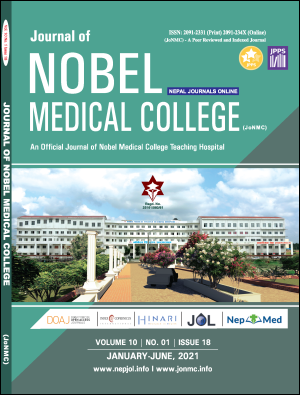Surgical Management and Early Outcome of Encephalocele
DOI:
https://doi.org/10.3126/jonmc.v10i1.37946Keywords:
Cerebrospinal Fluid, Encephalocele, Neural tube defect, Occipital MassAbstract
Background: There are limited studies pertaining to management of encephalocele in Nepal. So the present study seems justifiable to bridge the gap in the literature on encephalocele from Nepal on its clinical profile and early outcome. This study aims to characterize the clinical profile, management and outcome of largest series of encephalocele at tertiary care center in Nepal.
Materials and Methods: A retrospective analysis of encephalocele, managed surgically at two tertiary care centers between 2015 and 2020, was performed.
Results: Total of 25 cases was surgically managed in the present study. The median age of study population was 2.5 months. There were 11 male and 14 female with male to female ratio of 1:1.26. Occipital encephalocele was the most common variant. Lump in the head (n=11) was the commonest clinical presentation followed by hyperteliorism (n=10). One patient presented with cleft lip and one had CSF discharge in a case of occipital encephalocele. Bony defect was the common radiological findings. Excision and repair was the most common mode of surgery leading to good outcome. Mortality rate was 4% with morbidity of 20%.
Conclusion: Early surgical excision and tight dural closure with repair of bony defect is the standard treatment with relatively good outcome.
Downloads
Downloads
Published
How to Cite
Issue
Section
License
JoNMC applies the Creative Commons Attribution (CC BY) license to works we publish. Under this license, authors retain ownership of the copyright for their content, but they allow anyone to download, reuse, reprint, modify, distribute and/or copy the content as long as the original authors and source are cited.




